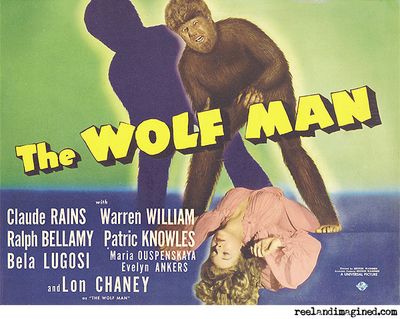‘Lon’ story short: The original Wolf Man
“Even a man who is pure in heart, and says his prayers by night, may become a wolf when the wolfbane blooms and the autumn moon is bright.”
You didn’t think I’d write about Lon Chaney Jr’s Wolf Man and not kick off with this famous line, did you? As a scene-setter, this rhyme, the creation of screenwriter Curt Siodmak, is hard to beat. It does raise the question, though: if this ‘man changing into a wolf’ business is so bloomin’ easy, why has it taken so long for Benicio del Toro to show us his all-over beard?
The Puerto Rican actor spent 16 weeks in the spring/summer of 2008 shooting a remake of The Wolf Man that, frustratingly, has had its release date pushed back several times over the past year. Thankfully, the film, directed by Joe Johnston, is almost with us. I was starting to wonder whether Universal was holding out until 2011, when it could market the movie as a 70th anniversary tribute to the 1941 original.
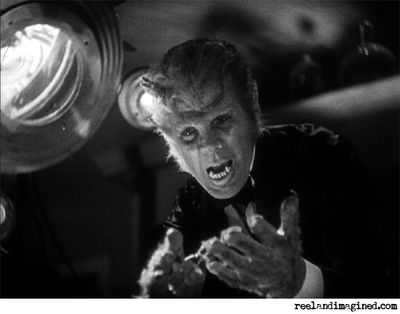
Sadly, it never got as far as a camera lens, and it was another three years before the studio released its first werewolf movie, WereWolf Of London, directed by Stuart Walker and starring Henry Hull as a globe-trotting botanist struggling with the fact that he changes into a furry killer when exposed to moonlight.
Often dismissed as a mere warm-up act for The Wolf Man, WereWolf Of London is, in some respects, the more startling film, especially when it comes to its transformation scenes. It was another six years, however, before a film really launched lycanthropy into popular culture.
**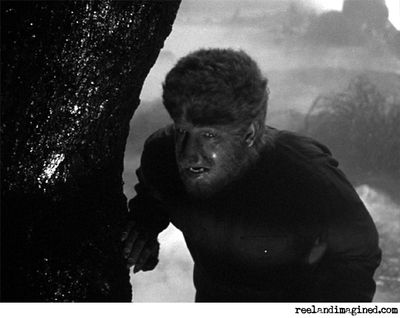
Unfortunately, though, the film is missing a decent human-to-werewolf transformation scene. The closest it comes is showing Chaney’s static legs growing hairy through a series of lap dissolves. This is the single most disappointing aspect of The Wolf Man. The film is high on atmosphere, boasts a memorable score and reaps the benefits of a top-notch cast, including Claude Rains, Bela Lugosi and Evelyn Ankers. Best of all, Chaney, in Jack Pierce’s classic make-up, clearly relishes the role that would define his career. The film is, however, missing a big part of the Wolf Man legend: a close-up of Chaney sprouting facial fuzz. For that, audiences had to wait two years.
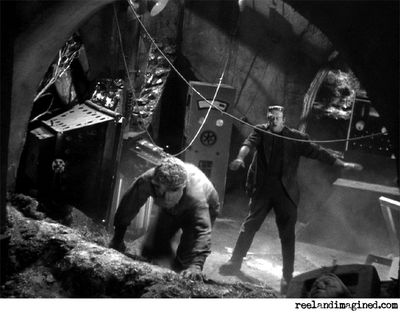
(Before I go any further, I really ought to issue a major spoiler warning: if you’d rather not know how the Wolf Man saga ends, skip the next three paragraphs.)
More monster mashes followed: House Of Frankenstein in 1944, House Of Dracula in 1945. Both films introduce Dracula (John Carradine), before offing him to make way for the Frankenstein and Wolf Man show, with Talbot seeking cures from crazed/beleaguered scientists who can’t resist sparking up Frankenstein’s monster (Glenn Strange). House Of Frankenstein is the better film, benefiting from an atmospheric opening and Boris Karloff’s memorable Doctor Niemann. But House Of Dracula has its moments, most of them courtesy of Carradine, and is at least notable for bringing the curtain down on Larry Talbot’s story by - drum roll, please - curing him.
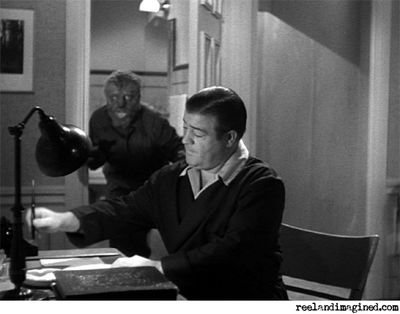
Personally, I find the film a bit of a slog beyond the first 20 minutes. When it comes to Costellos, I’d rather watch Elvis than Lou, but I can’t deny the initial thrill of seeing Bela Lugosi return to the role of Dracula, complete with creaking coffin lid and flickering candle.
The film ends with the Wolf Man leaping to his death, his fourth on-screen demise. In the 1940s, most people only ever saw a movie once, in a theatre, so continuity between these monster flicks wasn’t a chief concern. Talbot’s resurrection in House Of Dracula is left unexplained. It wasn’t even that clear in Frankenstein Meets The Wolf Man. The series is riddled with inconsistencies, the characters’ motivations driven mostly by the need to draw the monsters together.
The sequels are fun to various degrees but, when it comes to story, it’s the 1941 original that lingers, and I find the idea of giving Lawrence Talbot a fresh start in 2010 very appealing. Joe Johnston’s remake, titled The Wolfman (rather than The Wolf Man), has a decent pedigree - it’s co-written by Andrew Kevin Walker (Se7en, Sleepy Hollow), boasts make-up by Rick Baker and, on paper at least, has a solid cast. The ever-shifting release date, which has noticeably avoided the summer season, has raised a few eyebrows, but a lengthy post-production period is better than a rushed one.
Post Van Helsing, it’s unlikely that we’ll see any monster team-ups for a good while, but if The Wolfman turns a tidy profit, surely Universal won’t be able to resist a straight sequel? As every horror fan knows, there’s only one thing certain to kill a monster, and that’s bad box office.

